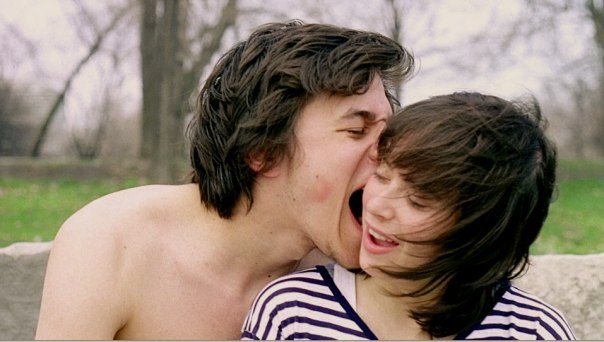
Gene Fojtik
-
Posts
54 -
Joined
-
Last visited
Posts posted by Gene Fojtik
-
-
-
Angenieux 20-120 f2.6 T2.9 PL Mount in very good condition.
http://www.ebay.com/itm/121339798270?ssPageName=STRK:MESELX:IT&_trksid=p3984.m1558.l2648
-
Mine does. You will see a cropped image when zoomed in but it is a big improvement over the original viewing system. Though, the eyepiece is a not as comfortable.
-
-
-
-
-
http://cgi.ebay.com/ws/eBayISAPI.dll?ViewItem&item=120740193726
Heinz Kilfitt Makro Kilar 90mm f2.8 Arri Standard Mount
-
-
-
COOKE SPEED PANCHRO 25mm Ser III f2.0 T.2.2 Arri Standard Mount
http://cgi.ebay.com/COOKE-SPEED-PANCHRO-25...=item1c1183d10a
-
Assuming that you are finishing digitally, whoever telecines your footage should easily be able to bring your image back to normal levels. I accidentally overexposed some 5217 by 4 or 5 stops and then had it pulled one stop. The telecine guy had no problem bringing the image back. Kodak stock is very forgiving. You probably don't even need to pull it. The most I think they can actually pull is 1.5 stops, maybe close to 2. At least that is what Deluxe LA told me. So, I just went ahead with one leaving 3-4 stops of overexposure for the colorist to deal with. He had to tone down the colors a bit because they were very saturated, especially the reds.
Here is a frame grab to give you a reference. There was a retro vibe to this shoot and we used the old Schneiders. So the glass yielded a softer image to begin with.
-
Raoul Coutard appears as a cameraman in Contempt by Godard.
-
There was a complete redesign on the Ser 3. The 18mm is much smaller, has a flat front element and offers more coverage. The same can be said about the 25mm apart from the flat front element.
Coatings vary quite a bit on Cooke lenses. I have been assembling a set and both ser 2 and 3 made in the mid 70s are very cool compared to the warmer look of those made in 1970 and earlier.
You will notice a bluish coating to some of the Ser 3 18mm sometimes that yields a warmer image than say one with a clearer magenta-ish coating from 1976.
I have actually been surprised by the lack of warmth of the later panchros, since I expected them to be warm. They are razor sharp on a digital sensor (GH1). I have yet to test them out on 35mm so I am curious to see how they will behave on film.
I have a clear 75mm from 1975 and one with the classic radio active decay from 1957. The older 'radioactive' one is a more pleasing portrait lens IMO but the yellowing seems to make the lens lose a stop of light or more. The later model is sharper, higher in contrast, and looks more saturated but lacks that unique golden tone of the older one.
-
Jean-Pierre Melville & Henri Decaë (Le Samourai & Le Circle Rouge - among others)
-
COOKE SPEED PANCHRO S2 32mm & 40mm
32mm
http://cgi.ebay.com/COOKE-SPEED-PANCHRO-32...=item1c10991b76
40mm
http://cgi.ebay.com/COOKE-SPEED-PANCHRO-40...=item1c10992abd
-
Zeiss Distagon 16mm f1.2 Arri B-mount Super 16 and RED 3K
http://cgi.ebay.com/ZEISS-Distagon-16mm-F1...=item1c1036010b
Zeiss Vario Sonnar 12.5-75 f2.0 Arri B-mount
http://cgi.ebay.com/ZEISS-VARIO-SONNAR-12-...=item1c103792df
-
Thanks. I have seen some nice 35mm telecined footage of the vivid but have not heard much if anything about how it performs on a print. I have heard that the blacks look milky in 16mm. The tests fuji has posted look great but digitized footage on youtube does not tell you much about what the image will look like projected. I think the stock is designed for a DI and not a contact print. Do you have any frame grabs that illustrate your frustration with the stock?
-
-
Has anyone had any experience printing the Fuji vivid stocks without a DI in 35mm?
I am considering using the 160 on a shoot and need to do some tests, but I intend to ultimately strike a print of the finished film via a contact print and wanted to know if anyone had done the same.
Anything I need to keep in mind when communicating with the lab? Should I expect better results printing on Fuji stocks vs Kodak?
Has any one mixed the Fuji 560t with Kodak 5219?
Does anyone anticipate mixing these two stocks creating problems in a print situation?
Also, has anyone pushed the 160 more than 1 stop?
Thanks.
-
-
Does any one know if BL3 magazines are compatible with BL4 and BL4s cameras?
Fauer's book seems to be ambiguous on this point. It says that the newer mags are backward compatible but the older ones are not forward compatible. Yet it mentions the BL1 and BL2 when referring to the older mags and does not say whether the BL3 mags are compatible with the BL4 or BL4s.
Thanks!
-
I need a Cooke Speed Panchro Ser 3 18mm as well as a Deep Field Panchro 100mm. Please send me a message if you have one you would like to sell.
Thanks!
-
I have a forward reversible variable speed motor that is only working when it is dialed to no less than 4 and no more than 6 on the dial. Is this something that is fixable or is it a goner? Thanks!




Zeiss Cineovision Rehoused 6 lens set. Dragon 6k and FF35 coverage.
in Cine Marketplace
Posted
Zeiss Cineovision Rehoused 6 lens set. Dragon 6k and FF35 coverage. BNCR mount.
http://www.ebay.com/itm/Zeiss-25-35-50-85-100-135-1-4-Macro-6k-4K-Arri-Epic-Blackmagic-GH4-Canon-Contax-/121608814503?pt=LH_DefaultDomain_0&hash=item1c50733fa7